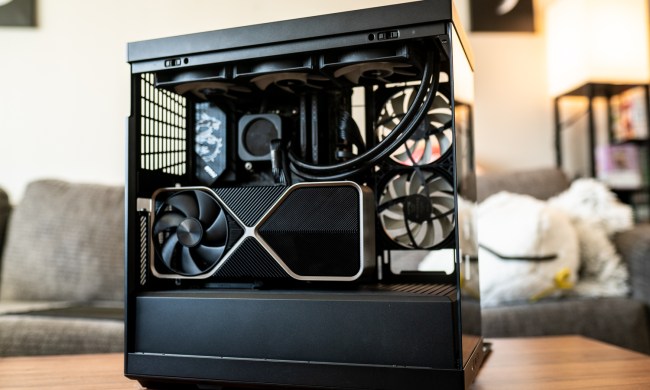After speculation that Nvidia may have lowered its G-Sync Ultimate monitor specifications following a number of display announcements at CES 2021, the GeForce-maker has now confirmed that changes were in fact made. With the new Ultimate guidelines, Nvidia is making it easier for manufacturers to get certification for new gaming monitors.
When Nvidia announced its G-Sync Ultimate specifications in early 2019 for the most premium G-Sync gaming monitors you can own, the company issued guidelines that include the highest resolution and refresh rates available, the lowest possible latency, backlighting in multiple zones, and support for a wide color gamut. These are all the specifications that gamers care about.
However, the big announcement was support for brightness levels of at least 1,000 nits. Two years later at CES this year, Nvidia’s announcements of several monitors — including the MSI MEG MEG381 and LG 34GP950G — come with G-Sync Ultimate ratings and specifications that list the maximum brightness as just HDR600, leading to some confusion as that’s 400 nits less than the original requirements from before. The requirements on Nvidia’s websites for G-Sync Ultimate also changed to list only “life-like HDR” now.

Following widespread reports that Nvidia may have quietly changed G-Sync Ultimate specifications, the company had reached out to Overclock3D to confirm and detail the changes for monitors.
“All G-SYNC Ultimate displays are powered by advanced NVIDIA G-SYNC processors to deliver a fantastic gaming experience including lifelike HDR, stunning contract, cinematic color, and ultra-low latency gameplay,” the company said in its statement. “While the original G-SYNC Ultimate displays were 1,000 nits with FALD, the newest displays, like OLED, deliver infinite contrast with only 600-700 nits, and advanced multi-zone edge-lit displays offer remarkable contrast with 600-700 nits.”
Nvidia added that G-Sync Ultimate was never defined alone by brightness ratings or a hardline requirement for VESA DisplayHDR1000 certification. And if Nvidia is correct, with new OLED gaming panels, gamers may not even notice the lower brightness requirements.
The decision to do away with the explicit language requiring HDR1000 requirement may be due to the fact that manufacturers were not able to meet the requirements, as screens with 1,000 nits of brightness are still rare. For comparison, in the non-gaming space, Apple rated its Pro Display XDR with 1,000 nits of sustained brightness, but the panel can go to a peak brightness of as high as 1,600 nits. However, the Pro Display XDR is also a professional-grade display that retails for $5,000, or more than the cost of most premium gaming rigs on the market.
With the new lower brightness requirement for G-Sync Ultimate certification, hopefully we’ll see more gaming monitors on the market this year.



